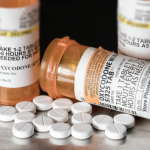For Michael J. Maricic, MD, the heat is always on—and not just from the scalding temperatures of the ever-present Tucson sun. Strolling through the lobby of his bone clinic, the same sign awaits him every morning: “Our mission is to provide state-of-the-art diagnosis and therapy of rheumatic disorders, combined with compassionate care.” Compassion is a primary adjective in that sentence and in his mind, and Dr. Maricic hopes this commitment will make him and his partners a top practice in a very busy market. After all, Arizona is a place where people retire—often taking their rheumatism with them.
Fresh Approach with Every Person
Some physicians think they’ve seen it all, but Dr. Maricic constantly reminds himself to take a fresh perspective to every patient. “Even if I’m able to immediately diagnose the problem, you also have to diagnose the patient’s attitude toward their illness,” he says. “I’ve seen patients with the exact same issues and yet one is walking around with energy while another feels they’re in constant pain. I have to give one a lot more support than the other.”
Dr. Michael J. Maricic doesn’t find any day easy—or without its rewards.
Dr. Maricic, who studied medicine at University of Zagreb in Croatia, always starts his day with a mandatory cup of coffee. For the next nine and a half hours he will have little to no down time.
“I see patients from eight to five-thirty every day right through lunch,” he says. “I also spend one half-day per week in clinical research and two half-days with medical students [from the University of Arizona]. I’m going over internal medicine and rheumatology with them, but I’m making sure we get time in with patients, rather than lecture-driven. Students have to learn how to deal with people. I also do consults during the week. … I have to make myself available to hospitals as they need me.”
Business Is Never Usual
Although he doesn’t want a day to be business as usual, Dr. Maricic isn’t immune to the fact that rheumatology is a business. “I have a strong interest in osteoporosis and bone disease and always have—can’t do rheumatology without getting involved in metabolic bone disorder. You have to participate in that aspect of rheumatic care and 20% to 30% of my referrals are for bone-related disorders.
“From an income standpoint it’s a helpful part of our practice and we participate in osteoporosis clinical trials that help to buffer some of the cuts in Medicare,” he continues. “Reimbursement of pharmaceutical trials pays better than Medicare. So, for a rheumatologist, clinical trials have many positives. Of course, it’s not lucrative compared to the past, and reimbursement will go down further. … None of us got into this thing to get rich.”
